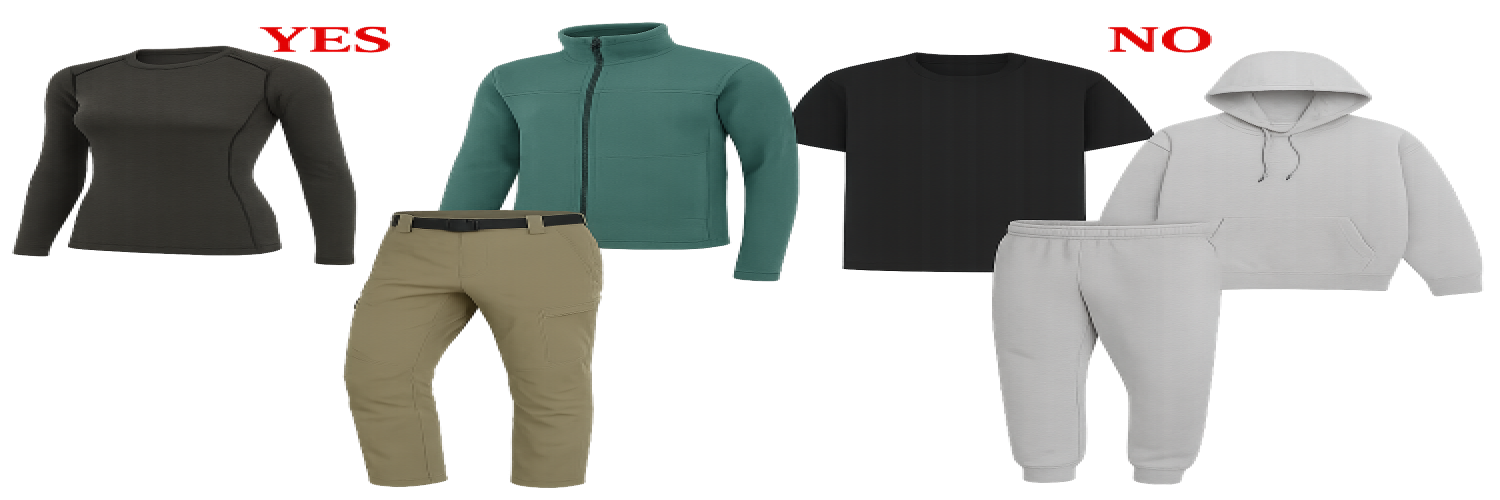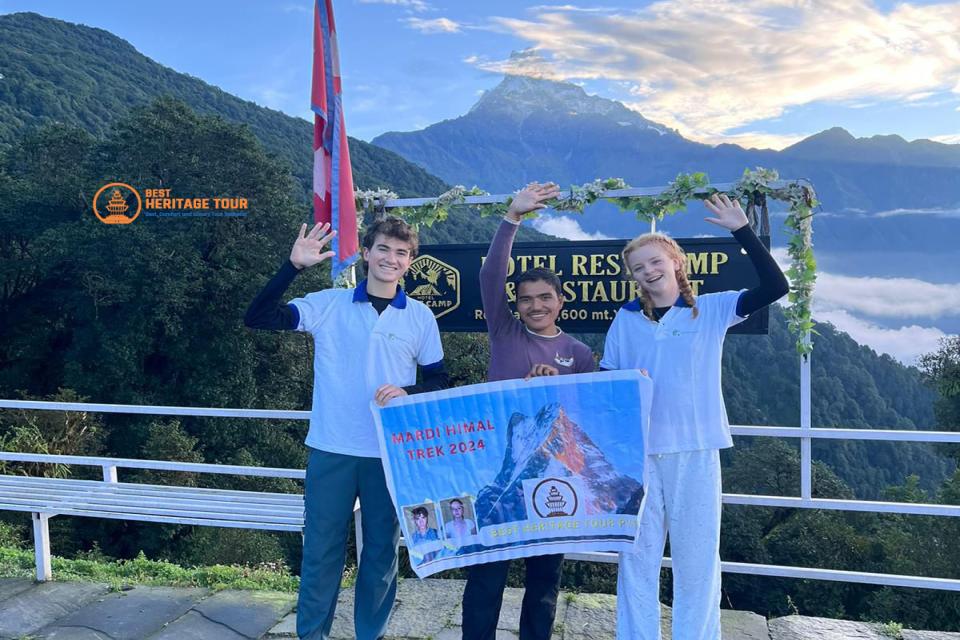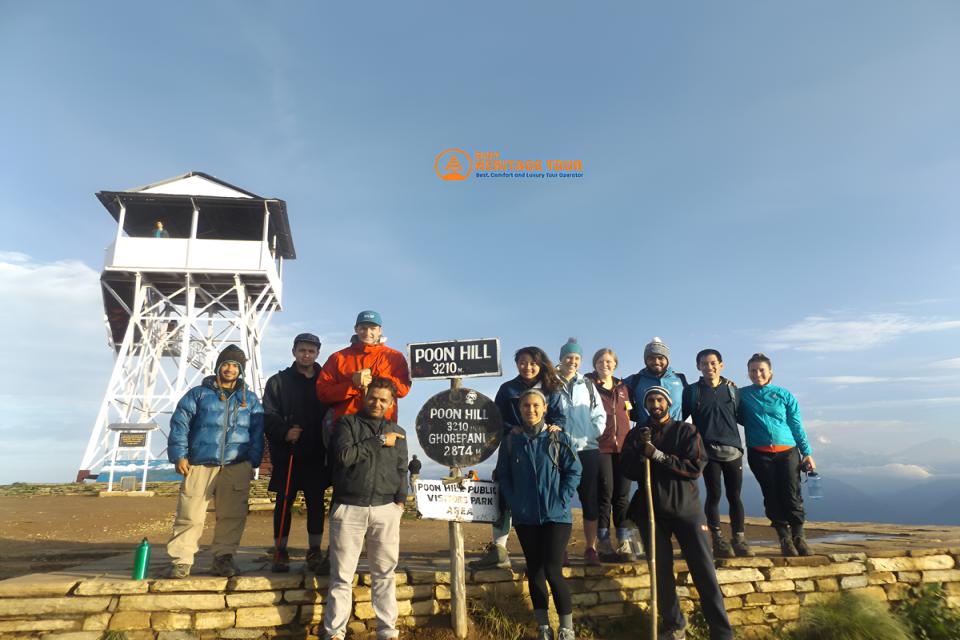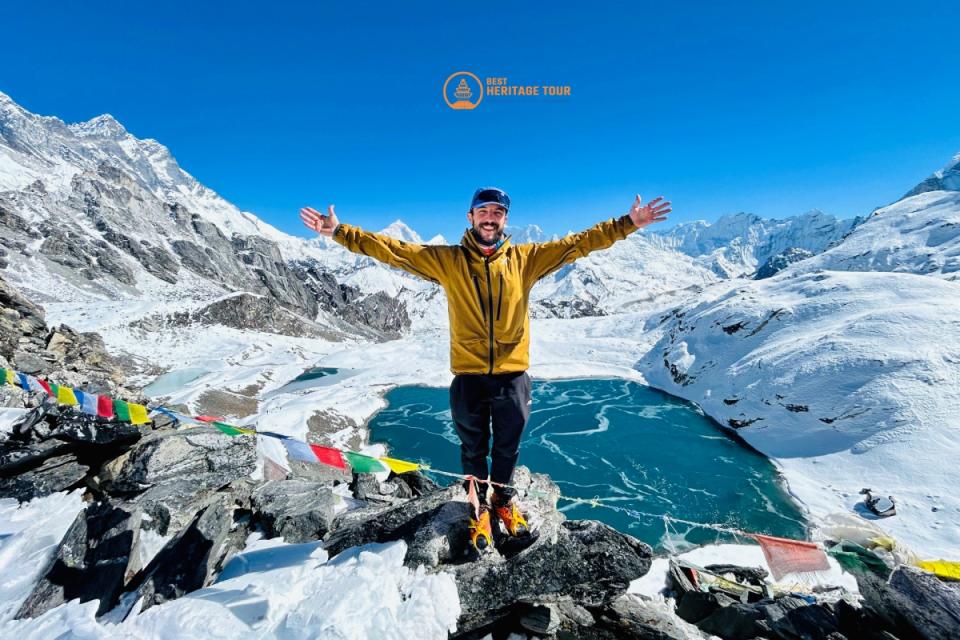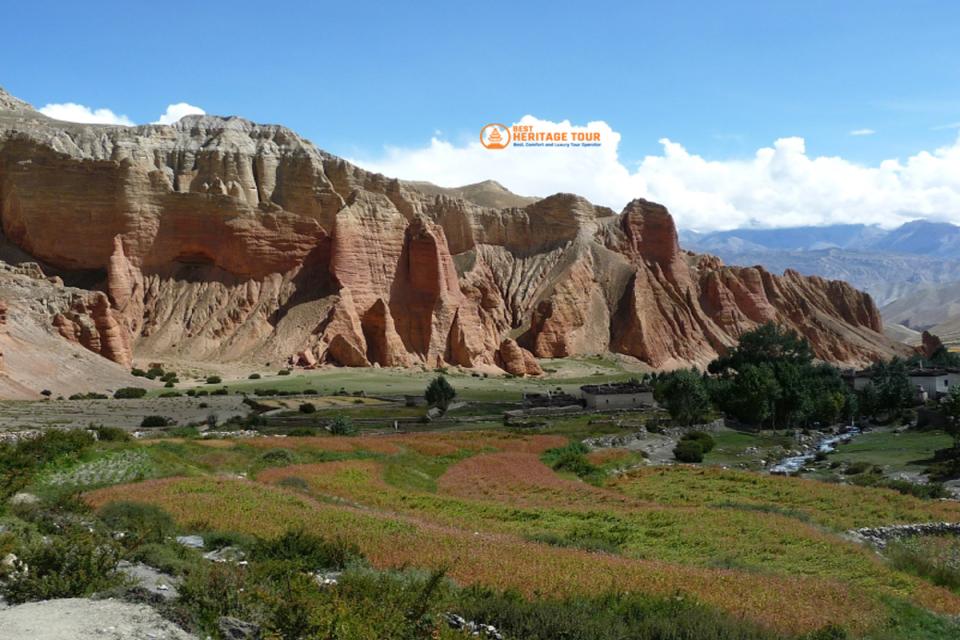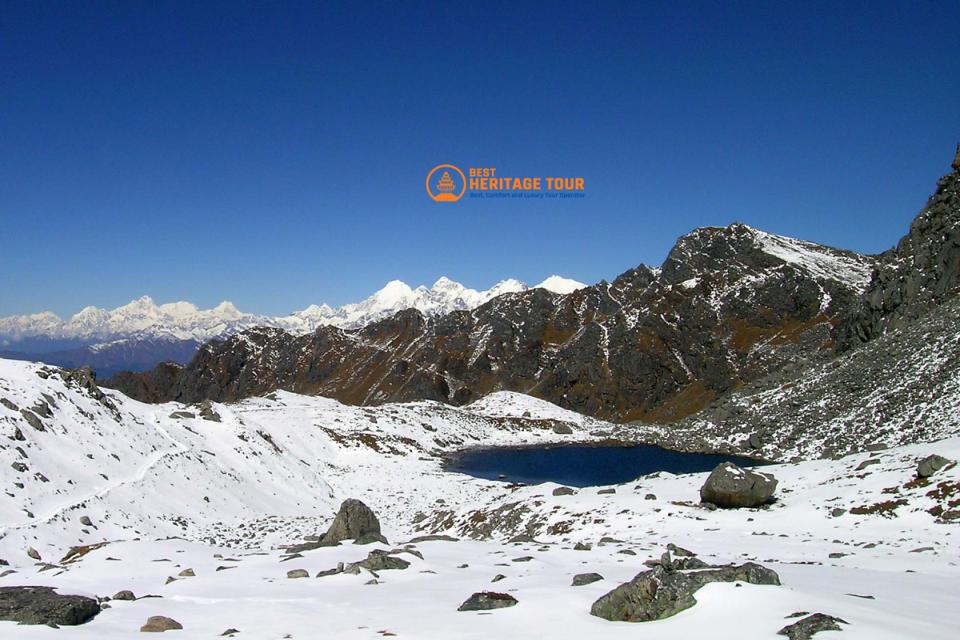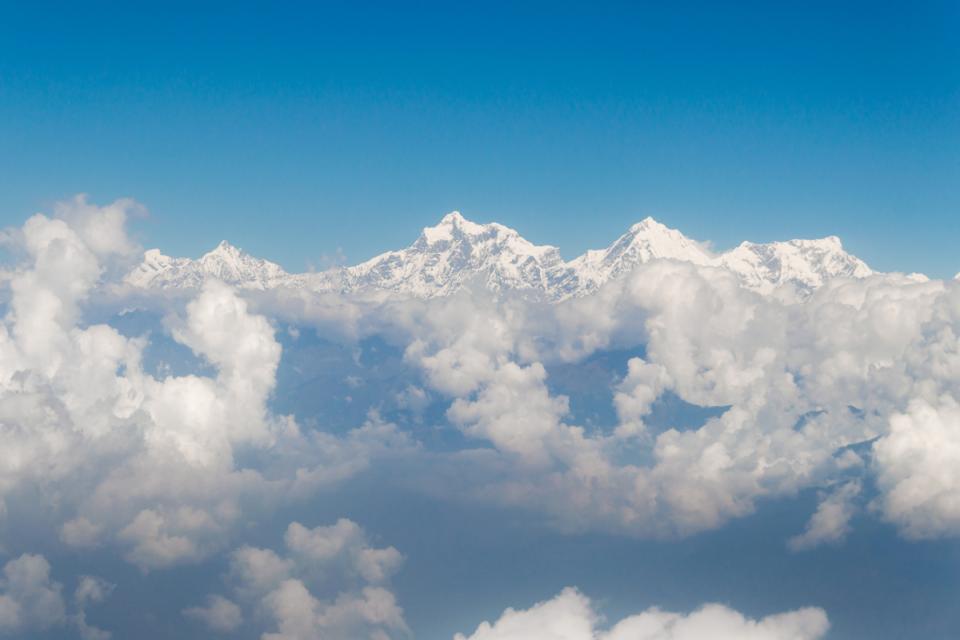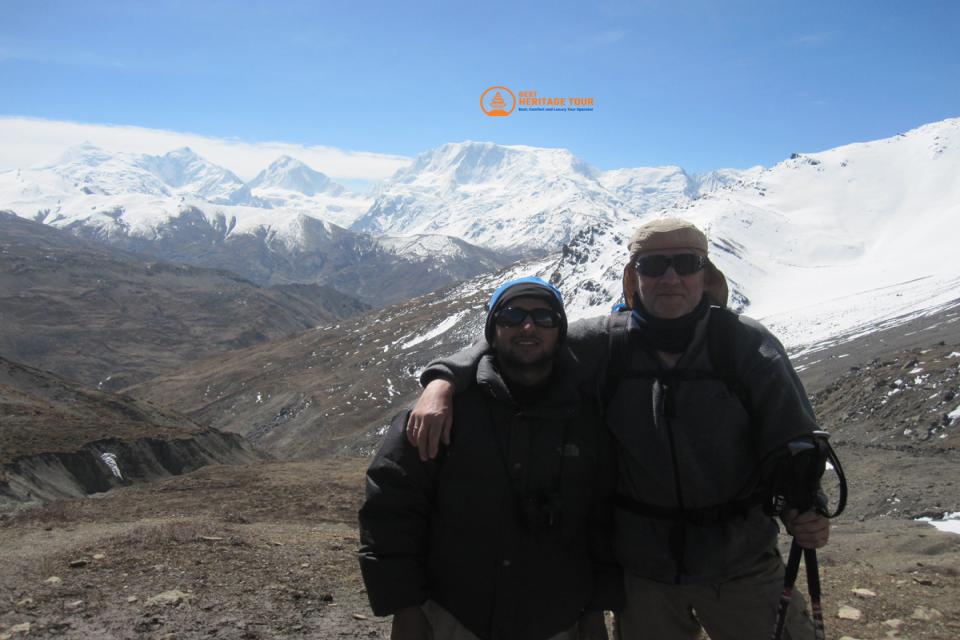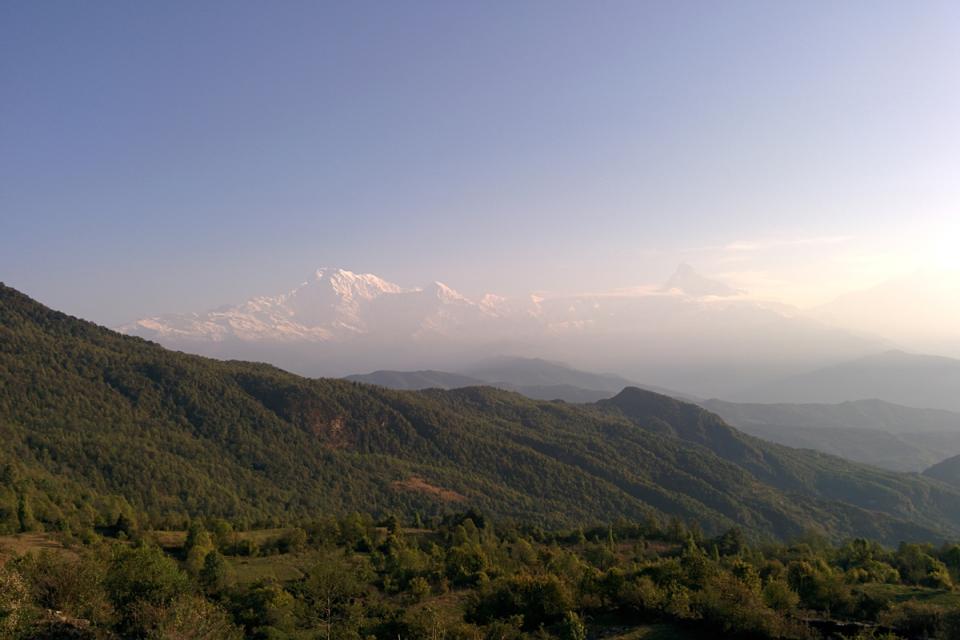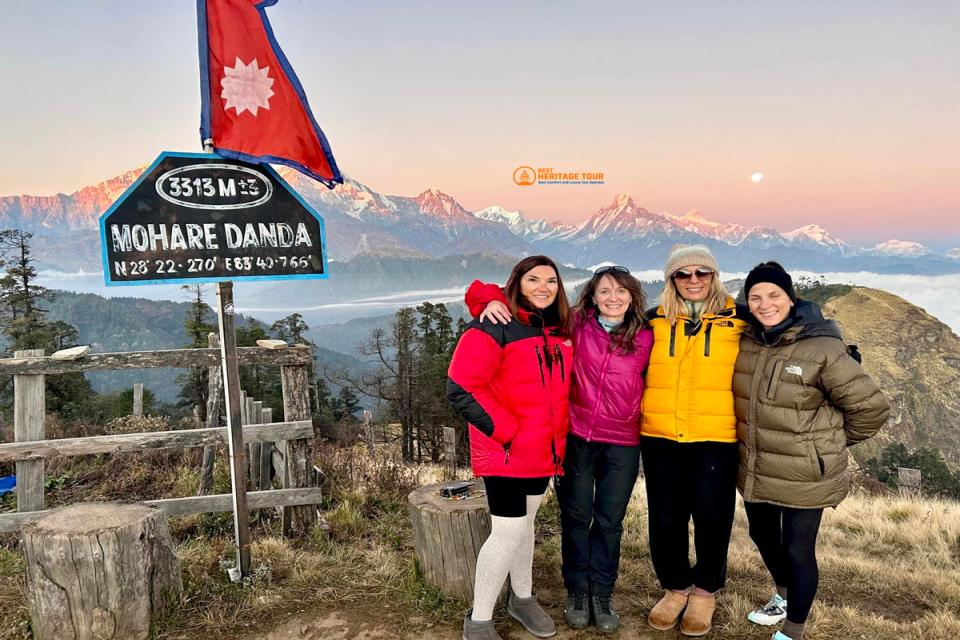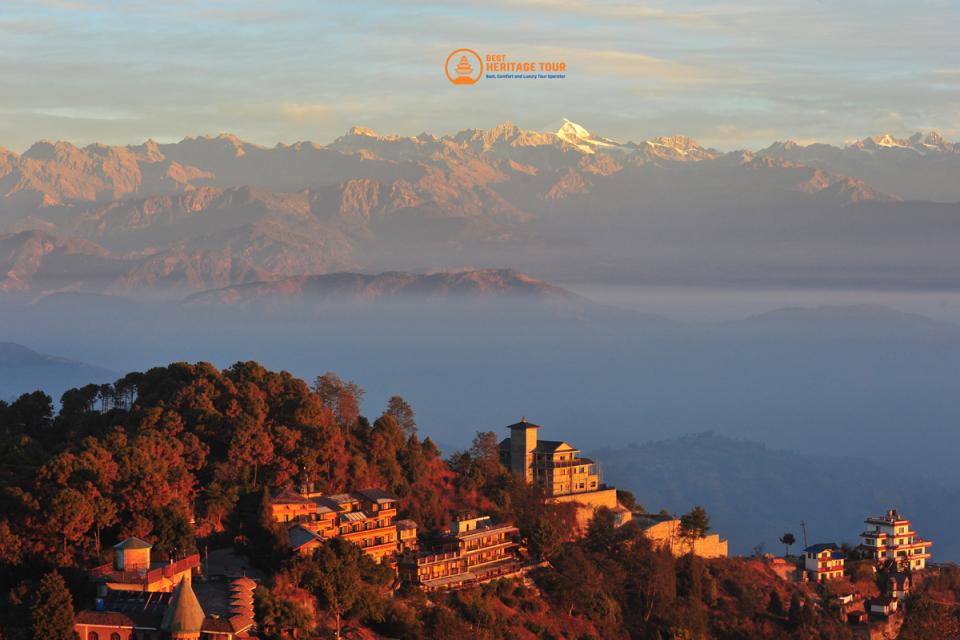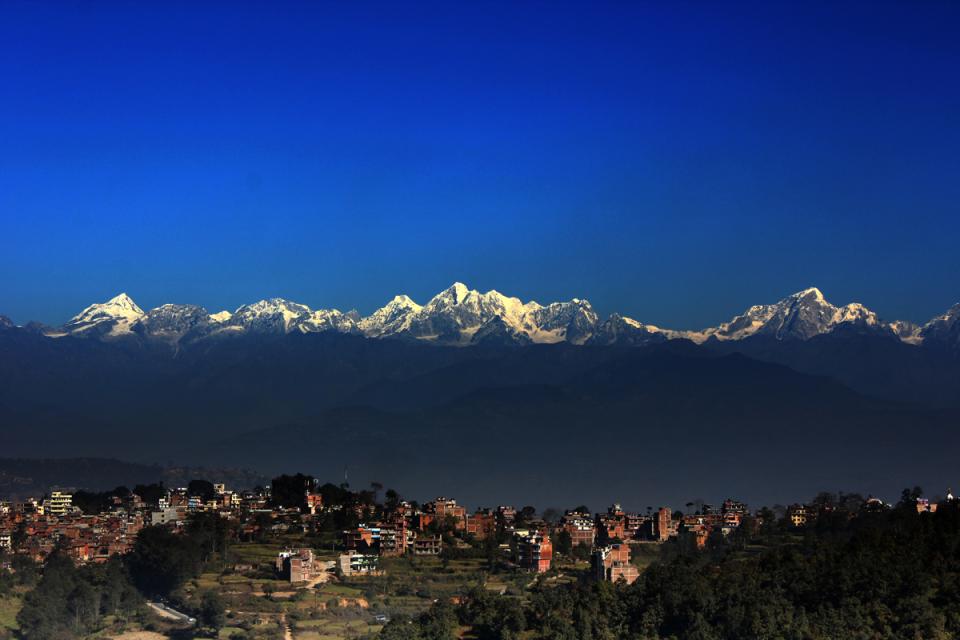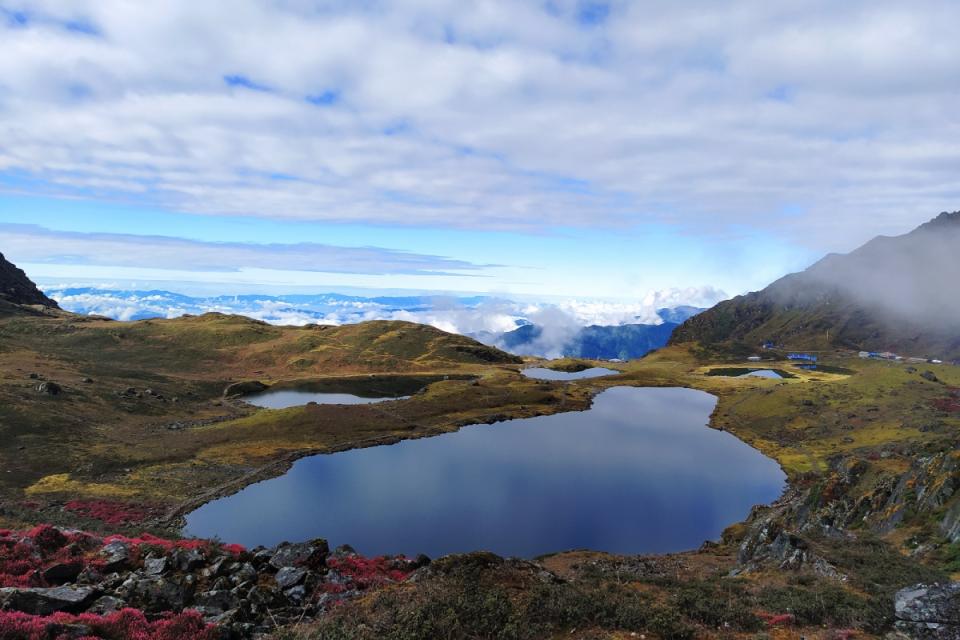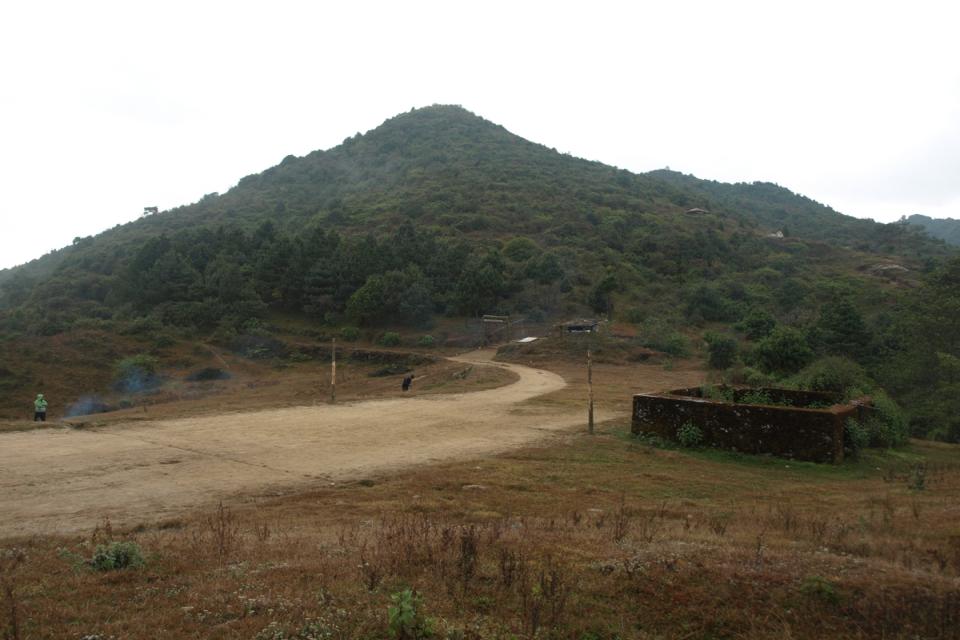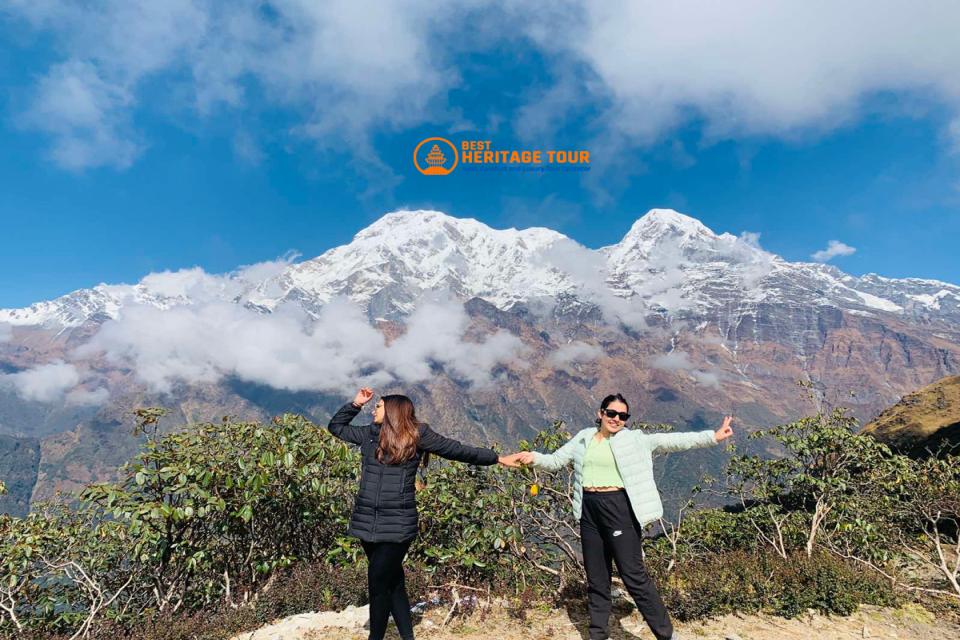Are you wondering why cotton is bad for hiking and whether it’s really worth leaving behind your favorite T-shirt on the trail? If you’ve ever experienced the discomfort of damp, heavy clothing or struggled with chafing and cold on a hike, whether in the popular Annapurna Region, Everest Region, or even the less-traveled Langtang Region and Manaslu Region, you’re not alone. Understanding the right hiking clothes is essential, not just for comfort, but for your safety outdoors.
Cotton’s tendency to retain moisture can lead to serious hiking dangers like hypothermia, especially when you least expect it, whether you’re trekking busy trails like Everest Base Camp, Annapurna Circuit, Manaslu Circuit, Lantang Valley, or exploring off-the-beaten paths. But why does cotton take so long to dry, and how exactly does it affect your body temperature when you’re out in the elements? This guide will bust common myths about cotton and explain the science behind fabric performance in hiking gear.
We’ll also explore the best fabrics for hiking, from moisture-wicking synthetics to natural options like merino wool and bamboo, so you can choose the right material for every layer of your hiking kit. Whether you’re planning a summer trek or braving cold, rainy conditions, knowing which fabrics keep you dry, warm, and comfortable is key.
Ready to leave soggy cotton behind? Let’s dive into everything you need to know to hike smarter, safer, and more comfortably.
1. The Problem with Cotton in Hiking
Have you ever worn cotton on a hike and noticed how uncomfortable it feels once you start sweating or get caught in the rain? You might have heard the phrase, “cotton kills hikers,” but is there truth behind this hiking myth?
Let’s break down exactly why cotton is bad for hiking and why it can turn your outdoor adventure into a struggle.
Cotton Moisture Retention and Hiking Danger
Cotton has a natural tendency to absorb and hold onto moisture rather than wick it away. This means when you sweat or encounter wet conditions, cotton fabric soaks up water and stays wet for a long time. This moisture retention leads to several problems:
- Slow Drying Time: Unlike synthetic or wool fabrics, cotton can take hours to dry fully, leaving you wet and heavy.
- Increased Risk of Hypothermia: When your clothes remain damp, your body loses heat much faster. Does cotton cause hypothermia when hiking? Unfortunately, yes, wet cotton draws heat away from your body, especially in cooler temperatures or windy conditions.
- Chafing and Skin Irritation: Damp cotton rubbing against your skin often causes uncomfortable chafing, which can make even a short hike painful.
Why Does Cotton Take So Long to Dry?
Cotton fibers are naturally absorbent, which means they hold water inside the fabric structure instead of pushing it to the outer surface where it can evaporate. This makes cotton a poor choice when you need quick-drying hiking clothes that keep you comfortable and safe.
Hiking Chafing From Cotton Clothing
Have you noticed those raw spots or rashes after a long day on the trail? Wet cotton combined with friction increases the likelihood of chafing and skin irritation. This can be more than just uncomfortable, it can limit your movement and enjoyment outdoors.
In short, cotton’s moisture retention and slow drying qualities make it unsuitable for hiking. Instead, choosing fabrics that wick moisture away from your skin and dry quickly is essential for staying warm, dry, and comfortable on every adventure.
2. Science behind Fabric Performance Outdoors
Have you ever stopped to wonder what really makes one hiking fabric perform better than another? Understanding the science behind how different materials interact with your body and the environment can make a huge difference in your comfort and safety on the trail.
At the heart of fabric performance are two key concepts: wicking vs absorption and thermal regulation. Let’s unpack what these mean and why they matter.
Wicking vs Absorption: What’s the Difference?
- Absorption means the fabric soaks up moisture and holds it close to your skin—think cotton.
- Wicking fabrics pull moisture away from your skin to the outer layer, where it can evaporate quickly. This keeps you dry and comfortable.
Moisture-wicking fabrics for hiking are designed specifically to prevent the dreaded clammy feeling and help regulate your body temperature, no matter the weather. Unlike cotton, which traps sweat, wicking fabrics manage moisture efficiently.
How Does Fabric Affect Body Temperature When Hiking?
Your hiking clothes act as your personal climate system. Some fabrics trap heat, while others allow air to circulate. The best breathable fabrics for hiking maintain this delicate balance, keeping you warm without overheating.
Here are some factors to consider:
- Insulation: Fabrics like merino wool naturally regulate heat by trapping warm air close to your skin.
- Breathability: Synthetic fabrics such as polyester and nylon allow sweat vapor to escape, reducing overheating.
- Moisture Management: Effective moisture transport prevents cold, wet clothes that can sap your energy and lower your body temperature.
Odor-Resistant Materials
One often overlooked aspect is odor control. Certain fabrics resist bacterial growth that causes smell, which is a huge plus for multi-day hikes. Materials like merino wool are naturally odor-resistant, unlike cotton, which tends to hold onto odors once wet.
Durability for Rough Terrain
When trekking through rugged landscapes, your clothing needs to stand up to wear and tear. Some fabrics are more durable and abrasion-resistant, meaning they last longer and protect you better.
By understanding these scientific properties, you’ll be able to make smarter choices when selecting hiking gear, leading to better comfort, safety, and performance on every trail.
3. Best Fabric Alternatives for Hikers
So, if cotton isn’t the answer, what fabrics should you be reaching for on your next outdoor adventure? The good news is that modern textile technology and natural fibers offer plenty of excellent options that keep you comfortable, dry, and safe on the trail.
Let’s explore some of the best fabrics for hiking and why they outperform cotton.
i. Merino Wool: Nature’s Performance Fabric
Merino wool is a favorite among hikers for many reasons:
- Natural Moisture-Wicking: Unlike cotton, merino pulls sweat away from your skin and dries relatively fast.
- Odor Resistance: Thanks to its natural properties, it reduces bacteria buildup, keeping you fresher on multi-day hikes.
- Thermal Regulation: It keeps you warm in cold conditions but also breathes well enough to be comfortable in milder weather.
ii. Polyester: Lightweight and Fast-Drying
Polyester is one of the most popular synthetic fabrics for hiking clothes:
- Quick-Drying: It excels at moisture-wicking and dries rapidly, making it perfect for wet or sweaty conditions.
- Durability: Resistant to stretching and abrasion, it holds up well on rough terrain.
- Affordable: Generally more budget-friendly than natural fibers like merino wool.
iii. Nylon: Tough and Reliable
Is nylon good for hiking clothes? Absolutely. Nylon is known for:
- Strength and Abrasion Resistance: Ideal for outer layers exposed to branches and rocks.
- Lightweight: Doesn’t add unnecessary bulk.
- Water Resistance: Often treated to repel water, keeping you dry during unexpected showers.
iv. Synthetic Blends: The Best of Both Worlds
Blended fabrics combine the benefits of natural and synthetic fibers. For example:
- Polyester-merino blends offer durability and odor control.
- Nylon-polyester blends boost abrasion resistance and moisture management.
These performance-optimized blends allow manufacturers to tailor clothing to specific hiking needs.
v. Bamboo Fabric: Eco-Friendly and Breathable
For those who prioritize sustainability, bamboo fabric is emerging as a solid option:
- Soft and Comfortable: Gentle on the skin, perfect for base layers.
- Breathable: Helps regulate temperature.
- Eco-Friendly: Bamboo grows quickly with fewer resources than cotton.
When selecting hiking gear, consider your specific needs: weather, intensity, and trail conditions, and choose fabrics that complement your adventure. By swapping cotton for these superior alternatives, you’ll enjoy improved comfort, better moisture management, and enhanced durability.
4. Layering Right: Choosing Fabrics for Each Layer
Have you ever wondered why hikers talk so much about layering? It’s not just about looking cool on the trail. Layering with the right fabrics is crucial to staying comfortable, dry, and protected, no matter the weather. Let’s break down how to choose the best materials for each layer of your hiking outfit.
Base Layers: The Foundation of Comfort
Your base layer sits closest to your skin, so it needs to handle sweat efficiently. Why avoid cotton socks for hiking? Because cotton traps moisture and can cause blisters and chafing. Instead, look for:
- Best base layer material for hiking: Merino wool or synthetic moisture-wicking fabrics like polyester or nylon.
- These materials pull sweat away from your skin and dry quickly, preventing that clammy, uncomfortable feeling.
Mid Layers: Insulation and Warmth
When temperatures drop, your mid layer traps heat to keep you warm. Choosing the right fabric here can make a big difference. Consider:
- Mid-layer insulation fabrics for cold weather hiking: Fleece, wool, or synthetic blends designed to retain warmth even when damp.
- These fabrics are breathable yet insulating, so you won’t overheat when you’re active but stay cozy when you rest.
Outer Layers: Protection from the Elements
Your outer layer shields you from wind, rain, and snow. Here, material choice balances waterproofing and breathability:
- Waterproof vs breathable outer layers hiking: Look for breathable waterproof fabrics like Gore-Tex or similar membranes.
- These keep water out while allowing sweat vapor to escape, so you don’t end up soaked from the inside.
Special Attention to Socks and Underwear
Small details matter. Avoid cotton socks and underwear, which hold moisture and cause discomfort. Instead, pick:
- Best moisture-wicking underwear for hiking: Synthetic blends or merino wool for dryness and odor control.
- Well-chosen underlayers prevent chafing and skin irritation during long hikes.
By layering with the right fabrics, you’re essentially creating a climate-controlled system that adapts to your body’s needs. This approach not only boosts comfort but also enhances safety, helping you avoid hypothermia and overheating no matter where your adventures take you.
5. Seasonal Considerations When Choosing Fabrics
Have you ever packed the same hiking clothes for different seasons, only to realize halfway through your trip that your gear just isn’t cutting it? Choosing the right fabric for the season can make or break your outdoor experience. Let’s explore how seasonal conditions affect your choice of hiking materials and what fabrics work best when the weather changes.
Best Summer Hiking Clothes Material
In hot weather, breathability and moisture management become top priorities. You want fabrics that keep sweat off your skin and dry quickly to avoid discomfort and overheating. Look for:
- Lightweight, moisture-wicking synthetics like polyester or nylon
- Fabrics with UV-resistant hiking clothing materials to protect your skin from the sun
- Breathable blends that allow airflow and help regulate your body temperature
Cold Weather Hiking Fabrics That Keep You Warm
When temperatures drop, trapping heat becomes essential without causing excessive sweating. The best winter hiking fabrics to prevent hypothermia focus on insulation and moisture control:
- Merino wool for natural warmth and odor resistance
- Insulating fleece or synthetic mid-layers that stay warm even when damp
- Waterproof and breathable outer shells to shield against snow and wind
Quick-Dry Hiking Clothes for Rainy Conditions
Rain can quickly turn a fun hike into a miserable one if your clothes stay wet. Quick-dry fabrics designed for rainy conditions are a must-have:
- Synthetic fibers like polyester and nylon that repel water and dry fast
- Waterproof membranes that allow sweat to escape but keep rain out
- Avoid cotton completely, as it soaks up water and holds it close
By aligning your fabric choices with the seasons, you’ll stay comfortable and safe no matter the weather. Seasonal awareness ensures that your hiking clothes work with you, not against you, on every adventure.
6. Practical Tips for Building a Cotton-Free Hiking Kit
Now that you know why cotton isn’t your friend on the trail and which fabrics outperform it, how do you build a hiking wardrobe that keeps you comfortable and safe? Creating a cotton-free hiking kit may sound daunting, but with a few practical tips, you’ll be geared up and ready for any adventure.
i. Read Fabric Labels Carefully
Understanding what you’re buying is the first step:
- Look for keywords like “moisture-wicking,” “quick-dry,” “breathable,” and “synthetic blend.”
- Avoid clothes labeled as 100% cotton or high cotton blends.
- Brands often specify whether their products are designed for outdoor or hiking use: use this to your advantage.
ii. Prioritize Affordable Non-Cotton Hiking Clothes
High-performance gear doesn’t have to break the bank. Consider:
- Synthetic fabrics such as polyester and nylon, which are often budget-friendly.
- Shopping during sales or checking out reputable outdoor brands offering affordable lines.
- Buying versatile pieces that can serve multiple purposes (e.g., a moisture-wicking shirt that doubles as a base or mid-layer).
iii. Use a Cotton-Free Hiking Gear Checklist
Staying organized helps you avoid accidentally packing cotton items. Your checklist might include:
- Moisture-wicking base layers (tops and bottoms)
- Durable synthetic or wool socks (no cotton!)
- Quick-dry underwear and mid-layers
- Waterproof and breathable outer shells
- Accessories like hats and gloves made from technical fabrics
iv. Care for Your Hiking Fabrics Properly
Extending the life of your gear means better performance and sustainability:
- Follow washing instructions carefully; synthetic fabrics often require gentle cycles and mild detergents.
- Avoid fabric softeners, as they can reduce moisture-wicking properties.
- Air-dry your clothes whenever possible to maintain fabric integrity.
By following these tips, you’re not only enhancing your hiking experience but also investing in gear that performs better and lasts longer. Building a cotton-free hiking kit is a smart, practical step toward more enjoyable and safer outdoor adventures.
Conclusion
Choosing the right hiking clothes material can truly transform your outdoor adventures. After all, why settle for discomfort and unnecessary risks when there are so many better options than cotton? Have you ever felt weighed down by damp, slow-drying clothes or struggled with chafing on a long trek? These common issues highlight exactly why cotton is bad for hiking and why understanding the hiking clothes material guide matters.
By embracing the best fabrics for hiking, whether it’s the odor-resistant warmth of merino wool, the quick-drying power of polyester, or the durability of nylon, you’re equipping yourself for success on every trail. Plus, knowing how to layer smartly and choose seasonal fabrics helps you stay comfortable and safe, reducing the chances of hypothermia or overheating.
So, the next time you’re packing for an adventure, ask yourself: Are my clothes helping me perform at my best? Are they wicking moisture away, drying fast, and keeping me protected? When you choose the right materials, you’re not just dressing for the hike, you’re setting yourself up for a more enjoyable, safer experience from start to finish.
Ready to leave behind the myths about cotton and upgrade your hiking wardrobe? Your body and your next trek will thank you. Trust Best Heritage Tour, your reliable organizer for unforgettable adventures in Nepal, and don’t forget to check out our Essential Trekking Gear List for expert tips on what to pack for comfort, safety, and performance on the trail.
Contact Us Today for Bookings & Information:
-
Phone/WhatsApp/Viber: +9779851149197 / +9779810043046
-
Email: bestheritagetour@gmail.com / info@bestheritagetour.com
-
Website: www.bestheritagetour.com
-
Location: Thamel Marg, Kathmandu, Nepal
Author: Best Heritage Tour
Date: 27th May, 2025

